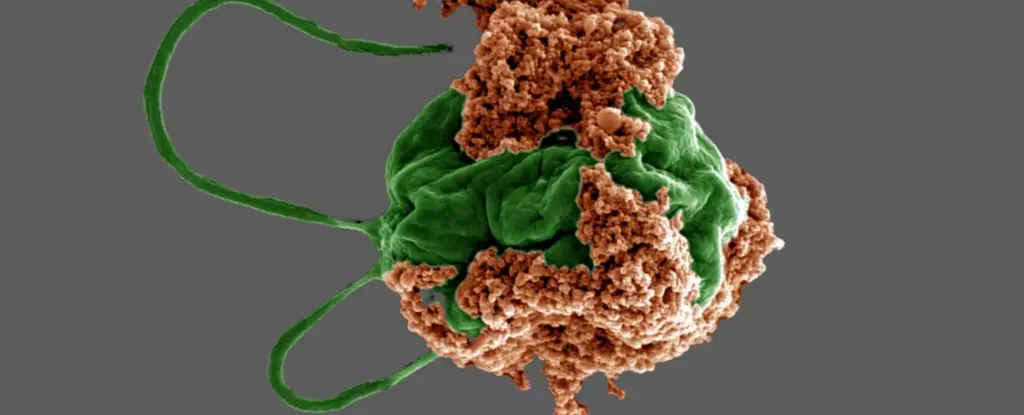The field of cancer treatment is constantly evolving, with researchers striving to find more effective and targeted therapies to combat the disease. One significant challenge in cancer treatment is the presence of tumors that metastasize to the lungs. Conventional chemotherapy often proves to be inefficient in treating lung metastases, as it fails to directly target the lungs and deliver a high enough concentration of the drug to effectively kill tumors.
A team of researchers from the Wang lab and Zhang Research Group at the University of California, San Diego have been working on developing biohybrid microrobots for the past five years. These tiny objects, made of a combination of natural and synthetic materials, have shown great promise in the field of medicine. Unlike traditional microrobots made of rigid metallic or polymeric structures, biohybrid microrobots overcome the limitations of toxicity and access to certain organs and tissues.
Microalgae play a key role in the development of biohybrid microrobots. These microscopic organisms are capable of autonomous movement using flagella, allowing them to navigate through organs such as the lungs. Unlike other microorganisms, microalgae are less toxic, cost-effective, and easier to produce. By harnessing the unique properties of microalgae, researchers have created a biohybrid microrobot called algae-NP(DOX)-robot.
The algae-based microrobots developed by the research team combine live green microalgae with nanoparticles coated in red blood cell membranes. The cell membranes act as a natural “camouflage,” improving the microrobot’s biocompatibility and preventing attacks from the patient’s immune system. Encapsulated within the nanoparticles is a common chemotherapy drug called doxorubicin. When administered through the trachea, the algae-based microrobots deliver the drug directly to the lungs, minimizing side effects on other organs.
In animal studies involving mice with lung metastases, the biohybrid microrobots demonstrated superior drug delivery capabilities compared to traditional methods. By swimming through the lung tissue, the microrobots distributed the drug effectively, evading destruction by immune cells. This targeted delivery approach resulted in a significant improvement in therapeutic outcomes, with treated mice experiencing a 40% increase in median survival time.
The success of the algae-based microrobots in treating lung metastases paves the way for potential applications in other lung-related diseases such as cystic fibrosis and idiopathic pulmonary fibrosis. Researchers are now focusing on optimizing the delivery of biohybrid microrobots through innovative motion control strategies, such as magnetic guidance or ultrasound trapping. While the clinical application of biohybrid microrobots may still be in the future, the groundbreaking research on combining living microalgae with nanoparticles holds immense potential for the development of bioengineered cancer treatments.


Leave a Reply